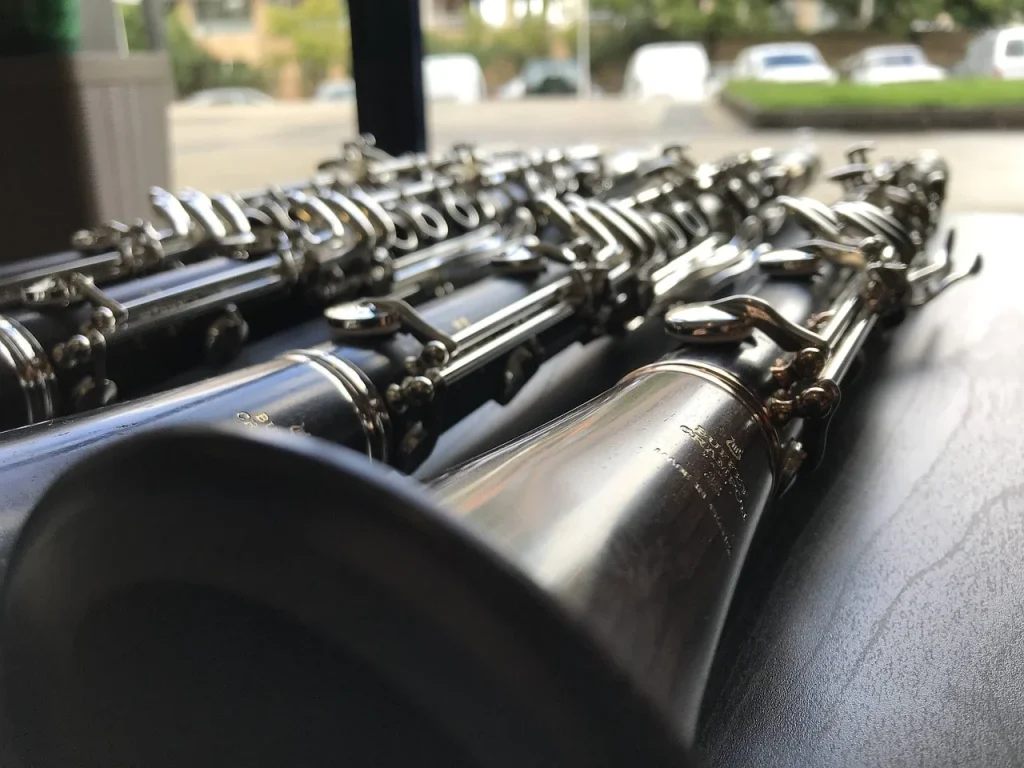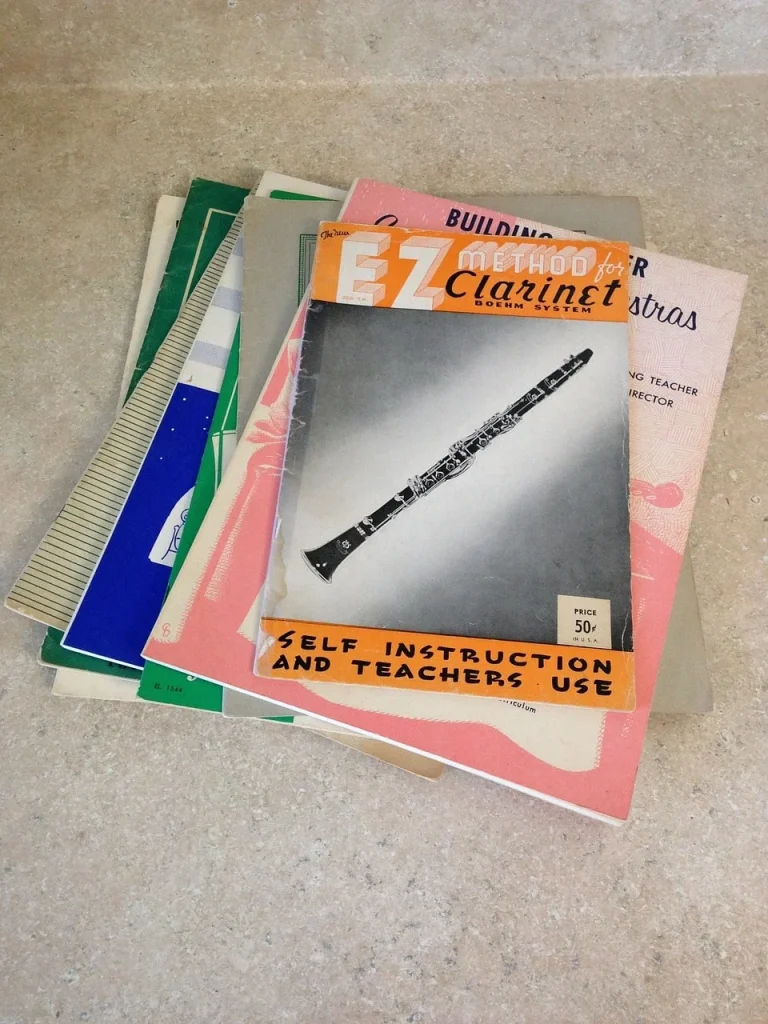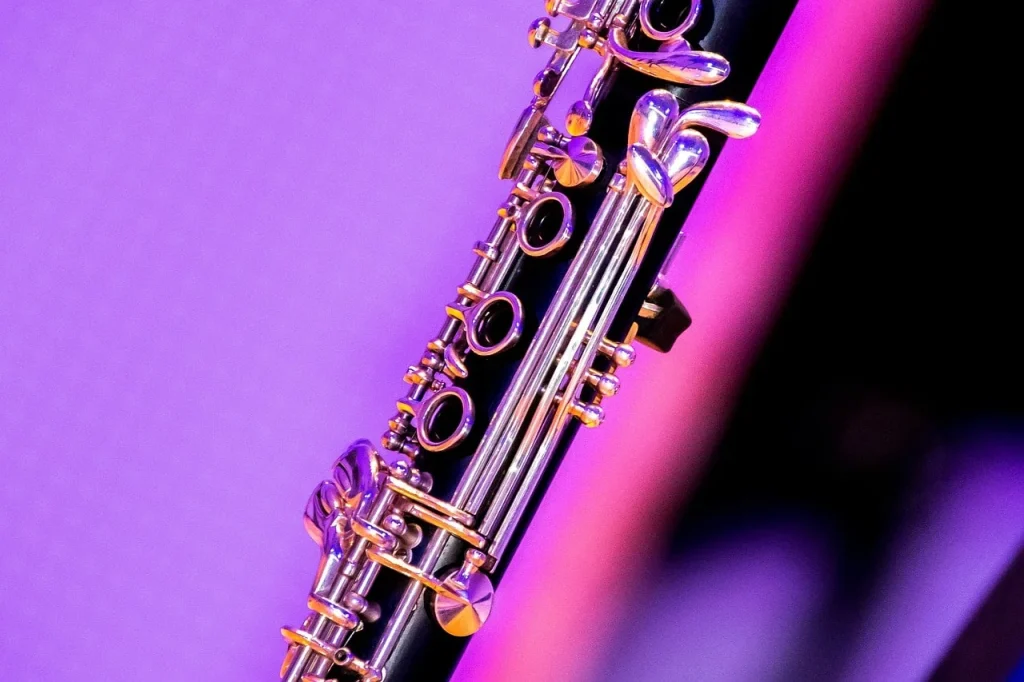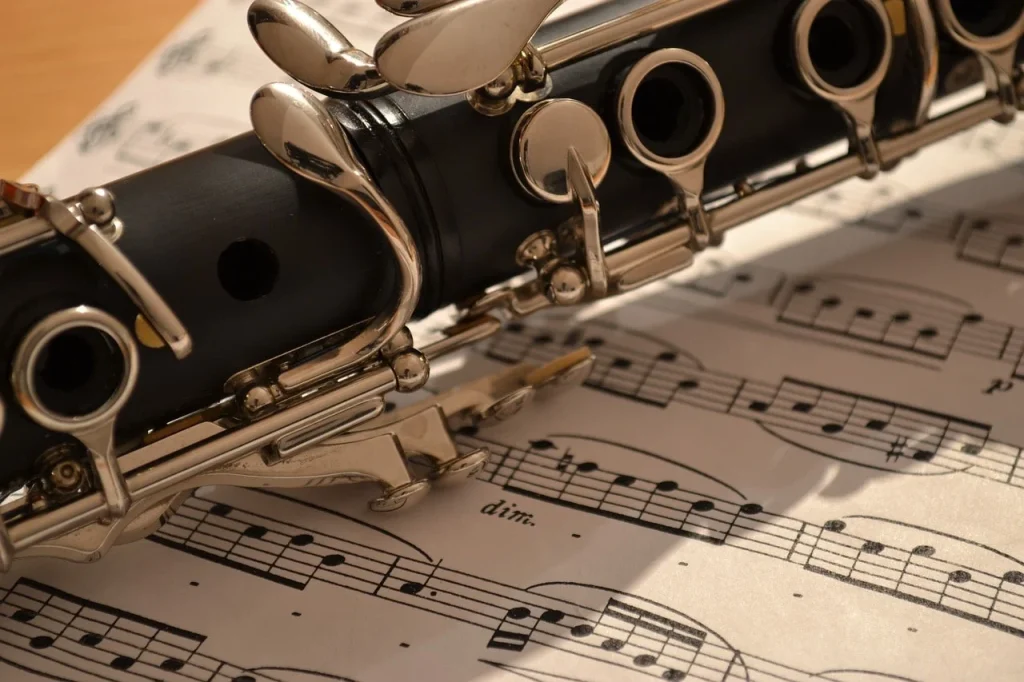Welcome to the wonderful world of the clarinet! This versatile instrument can sing with the sweetness of a bird and the power of an orchestra. Whether you’re a music enthusiast or simply curious, the clarinet has layers of interesting tidbits that are as captivating as its melody.
Today, let’s explore some interesting facts about the clarinet, uncovering its origins, its evolution, and why it continues to enchant musicians and audiences alike.
The clarinet is the most perfect musical instrument; it is the instrument that most resembles the human voice.
Richard Strauss
Clarinet Facts
Get ready to explore the details of the clarinet! Make sure to read carefully—there’s a quiz at the end of this article to prove just how much of an expert you are.
- The instrument can produce a range of four octaves, from the low E to the high C.
- Its invention in 1690 by Johann Christoph Denner was inspired by the chalumeau, a folk instrument.
- The modern instrument uses a Boehm system, which incorporates rings and axles for a more dynamic key mechanism.
- Over 50 individual parts are used in the assembly of a professional model.
- It has the unique ability to play both fortissimo (very loud) and pianissimo (very soft) dynamics effectively.
- Most of its body is made from African blackwood, known for its fine grain and density.
- Some jazz musicians prefer instruments made from metal to alter their sound to a more brilliant tone.
- The reed, typically made from cane, significantly influences the timbre and is highly sensitive to moisture.
- During the 20th century, renowned composer Igor Stravinsky wrote pieces specifically showcasing its versatile expressive capabilities.
- The mouthpiece alone can alter a player’s sound, and thus many performers search tirelessly for the perfect mouthpiece.
- It was once dubbed the “mock trumpet” due to its ability to mimic the trumpet’s military call.
- Marching bands often exclude this instrument because of its delicate reed, opting instead for more durable brass instruments.
- It played a pivotal role in the development of the orchestral music style during the Romantic period.

- In the realm of symphony, it usually carries the harmonious responsibility of bridging string and brass sections.
- The lowest note it can play is debated, but it is generally accepted to be a deep E.
- The Albert system is an alternative fingering method still used primarily in folk and traditional Eastern European music.
- Contrary to popular belief, the left hand is dominant in fingering for most playing techniques.
- Its keywork is often plated with silver or nickel to prevent corrosion and ensure smoother action.
- The term “licorice stick” is an affectionate nickname used by jazz players to describe their instrument.
- It is integral to klezmer music, known for its expressive cries and wails, which mimic the human voice.
- Advanced players can employ a technique called double tonguing to play extremely fast passages.
- The earliest surviving example dates back to the early 18th century and is preserved in a museum in Nuremberg, Germany.
- The bell of the instrument subtly influences the projection and intonation, with some players choosing bells made from different materials for a unique sound.
- Ebony is prized for constructing high-quality models because of its natural resonance and aesthetic appeal.
- Its music parts in orchestral scores are typically written in the treble clef.
- Extended techniques include multiphonics, where players can produce more than one note simultaneously.
- In Turkish music, a special type known as the G clarinet is used, tuned a whole step lower than the standard Bb model.
- There exists a contrabass model, which can sound two octaves lower than the standard Bb.

- The design and mechanics have evolved significantly since its invention, with recent models incorporating adjustable thumb rests for better ergonomics.
- Orchestras commonly use the A variant for pieces in keys with many sharps or flats to facilitate easier fingerings.
- The acoustics of the instrument allow it to blend well with others, making it a staple in both solo and ensemble settings.
- Leather pads versus traditional felt pads provide a different seal on the tone holes, affecting the tone and response.
- The reed is affixed to the mouthpiece with a ligature, which must be precisely tightened to ensure proper vibration.
- A significant shift in construction came in the 20th century when manufacturers began using synthetic polymers for student models.
- Mozart, charmed by its sound, was among the first major composers to include it prominently in his compositions.
- In jazz, it can produce a vibrant, wailing sound that has been iconic in many big band and swing compositions.
- Its keys are susceptible to sticking from accumulated moisture, requiring regular maintenance to ensure optimal performance.
- Albert and Oehler systems are variations primarily used in Germany and parts of Eastern Europe, featuring a fuller, rounder sound.

- The New Orleans jazz scene in the early 20th century saw the rise of its use as a leading solo instrument in many performances.
- Its assembly is intricate, requiring precise alignment of keys, which are typically hand-finished in high-quality models.
- Some contemporary pieces exploit its multi-phonetic capabilities to produce sounds reminiscent of electronic music.
- It has a prominent role in military bands, although typically reinforced by more robust, weather-resistant instruments in outdoor settings.
- Throat tones, which are inherently weak on many woodwinds, can be improved on this instrument with skilled embouchure control.
- The versatility allows it to mimic other woodwinds, making it a valuable tool for orchestrators and composers.
- Professional players often keep several reeds in rotation to accommodate changes in humidity and altitude.
- Many electronic wind instruments designed to emulate its sound include sensors to capture the unique way it is played.
- Its participation in chamber music spans from traditional wind quintets to modern experimental ensembles.
- The instrument’s music can often be heard in film scores, where its range is used to evoke a wide array of emotions.
- Young students often begin their musical journey with a plastic model, which is more durable and less expensive than the traditional wooden versions.
- The register key, located at the back of the instrument, is crucial for shifting into the upper registers, enabling it to reach higher pitches seamlessly.
Clarinet Myths

Let’s continue with the myths section. We’ll separate some common myths from the actual truth.
- Clarinets Always Play Soft, Gentle Music
It is often assumed that they produce only soft, gentle sounds. In reality, a wide range of dynamics is possible, from powerful fortissimos to delicate pianissimos, allowing for expressive versatility in orchestral, jazz, and solo performances. - The Clarinet Is Mainly for Classical Music
While prominently featured in classical music, the clarinet is also essential in jazz, klezmer, and contemporary music. Its expressive range and adaptability are valued across various musical genres. - Clarinets Are Only Made from Wood
Traditional clarinets are crafted from wood, but modern innovations include materials like plastic and metal. These materials are especially favored in school bands and outdoor performances due to their durability and cost-effectiveness. - The Clarinet Is an Easy Instrument to Learn
It is commonly believed that starting the clarinet is easy. However, mastering its complex fingering system, breath control, and embouchure can be quite challenging and requires dedicated practice. - Clarinet Reeds Last a Long Time
There is a misconception that clarinet reeds are long-lasting. In practice, reeds are susceptible to wear and damage and typically need to be replaced regularly to maintain sound quality and playability.
Clarinet Quotes

I hope you enjoyed all the information so far. Below you will find some quotes. Feel free to share more in the comments and I will add them to the list.
The clarinet is not just an instrument, it is a companion on the journey of musical discovery.
Sabine Meyer
Sabine Meyer, a renowned clarinetist, views the clarinet as a vital partner in exploring the vast realms of music, emphasizing its role in her artistic journey.
To me, the clarinet is the most poetic of all instruments—the only one capable of approaching the human voice in its nuances and shades of expression.
Artie Shaw
Artie Shaw, a legendary jazz clarinetist, celebrated the clarinet’s unique ability to mimic the subtlety and expressiveness of the human voice.
The clarinet, above all other instruments I know, more nearly approximates the human voice. It can be tender or terrifying.
Pete Fountain
Pete Fountain, a master of Dixieland jazz clarinet, recognized the instrument’s dynamic range, from soothing melodies to powerful cries.
Playing clarinet is like sending your soul right through the instrument, expressing everything in your heart.
Benny Goodman
Benny Goodman, often called the “King of Swing,” described playing the clarinet as a deeply personal and emotional experience.
The clarinet is a musical paintbrush: capable of delicate soundscapes and bold strokes of melody.
Julian Bliss
Julian Bliss, a contemporary clarinet virtuoso, likens the clarinet to an artist’s brush, capable of creating both intricate details and broad musical strokes.
Clarinet FAQ

Last section before the quiz so read carefully if you want to score a perfect ten.
- Are clarinet players good kissers?
There’s a playful belief that clarinet players, with all their practice on mouth positioning and breath control, might be good kissers. While kissing skills may vary, clarinetists definitely have strong control over their lips and breathing! - What is the clarinet made of?
They are traditionally made from a wood called grenadilla, but some models are also made from plastic, which is more durable and suitable for beginners or marching band use. - How many types of clarinets are there?
There are several types of clarinets, including the B-flat, A, E-flat, bass, contra-alto, and contrabass clarinets. The B-flat clarinet is the most commonly played. - When was the clarinet invented?
It was developed around the end of the 17th century by Johann Christoph Denner in Germany. It has evolved significantly since then. - How do you clean a clarinet?
Cleaning a clarinet involves using a soft cloth swab to remove moisture from the inside after each playing session, and occasionally cleaning the mouthpiece with warm, soapy water. Keeping the reed dry and the keys clean is also important.
Clarinet Trivia

Welcome to our clarinet quiz! Don’t blow it or the only thing you’ll be playing is the sound of silence. Get ready to test your reed-worthy knowledge!
Conclusion
The clarinet is more than just wood and keys; it’s a storyteller, a tradition-bearer, and a bridge between cultures. We’ve read its history, design, and the artistry it enables.
So, the next time you listen to or play a clarinet, think of the stories it’s telling through its melodies. Maybe it’s time to start your own clarinet story. Till next time, stay curious and explore more. Cheers.


